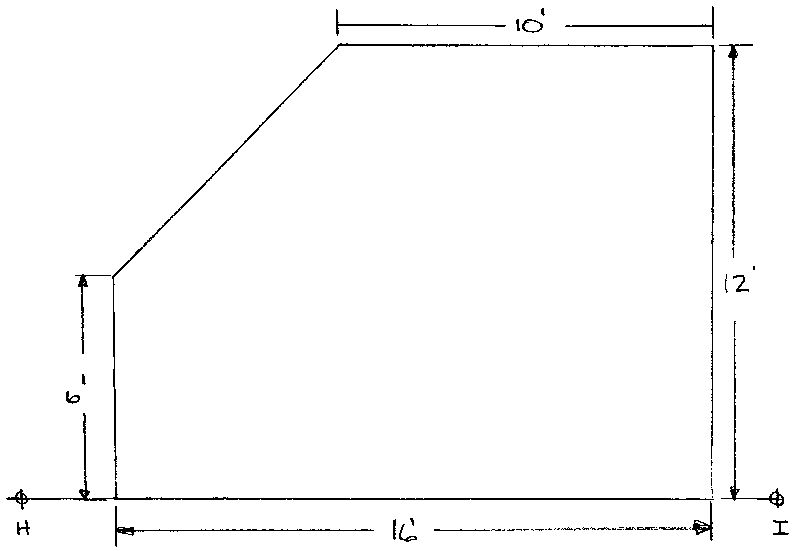Lab 1 - Horizontal Distances
Purpose:
The purpose of this lab is to gain experience with several physical
methods for measuring horizontal distances. Each individual should demonstrate
proficiency in pacing, while crews should work together using the tape
and chain.
Equipment Required:
- 100' steel chain (tape)
- 50' steel box tape
- 30m metric tape
- Tension handle
- Hand level
- Plumb bob
Procedure:
1. A beginning and end point, "A" and "B," have been
marked on the first floor hallway in Hagen. Your crew will measure the
distance between those points by chaining using a 100 ft steel chain.
Measure and record the distance to an accuracy of 0.01 ft. Continue measuring
until at least 3 readings are within 0.2 ft of each other. Record the
average of those readings as the correct length for the line.

2. Having determined the length, each individual will pace the
distance to determine their length of pace, and the number of paces in
100 ft. As before, pace the length at least three times, and average the
results.
Use the following note form to record your work.
|
Horizontal Distances
|
|
Method
|
From/To
|
Trial
|
Length
|
Average
|
Done by
|
| Chain |
A/B
|
1
|
215.35
|
|
RW,AL,GW |
| |
|
2
|
215.38
|
|
|
| |
|
3
|
215.36
|
215.36
|
|
| |
|
|
|
|
|
| Pacing |
A/B
|
1
|
74
|
|
RW |
| |
|
2
|
75
|
|
|
| |
|
3
|
72
|
73.7
|
|
| |
Known distance = 215.36’,
215.36’/73.7 paces = 2.92’/pace |
|
| |
100.00’/(2.92 ft/pace)
= 34 paces in 100 ft |
|
3. Intermediate points "C" and "D" have been
marked on the south staircase in Hagen, and an ending point "E"
has been marked on the second floor. Using the same note form as above,
measure the horizontal distance from "A" to "E."
Measure the distance at least twice and average.
4. A beginning and ending point, "F" and "G" of a
line have been marked in the second floor hallway in Hagen. Each individual
should pace the distance twice and estimate the distance based on their
length of pace. When all crew members have estimated the length, measure
the true distance using a metric tape. Calculate the correct length
in feet, and determine the relative error of your estimates. The
relative error (paced distance - measured distance/measured distance)
should be expressed as 1/XXXX. Use the following noteform:
|
Distances by Pacing
|
| Method |
From/To |
Trial |
Distance |
Average |
By |
| Pacing |
F/G |
1 |
56 |
|
RW |
| |
|
2 |
57 |
56.5 |
|
| |
Est. Distance = 56.5 paces * 2.92 ft/pace
= 165 feet |
|
| |
|
|
|
|
|
| Measuring |
F/G |
1 |
50.84 m |
|
RW, GW, AL |
| |
|
2 |
50.89 m |
50.87m |
|
| |
Distance in ft = 50.87 m * 3.281ft/m
= 166.88 ft |
|
| |
Relative Error = (166.9 - 165)/166.9
= .0114 = 1/88 |
|
5. Points "H" and "I", which are the end points of
a reference line, have been established on the floor in Hagen 110. Using
a steel box tape, lay out the shape shown below. When complete, ask the
instructor to check your work. Be prepared to discuss the methods you
used to create the shape. Include a space in your field book for the instructor
to sign off when completed

6. Each individual must demonstrate that they can throw the chain properly.
List each individual's initials in the field book with a space for the
instructor to sign off when the work is completed.
|
